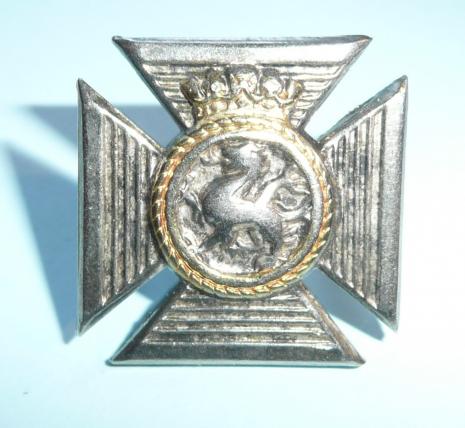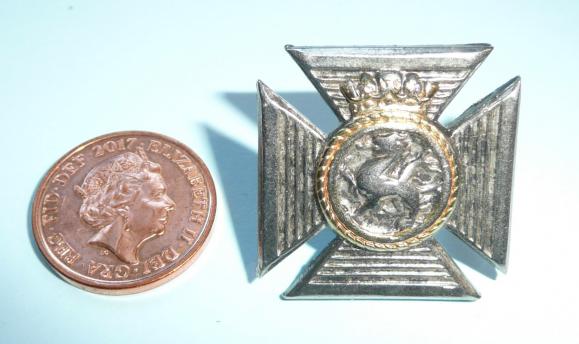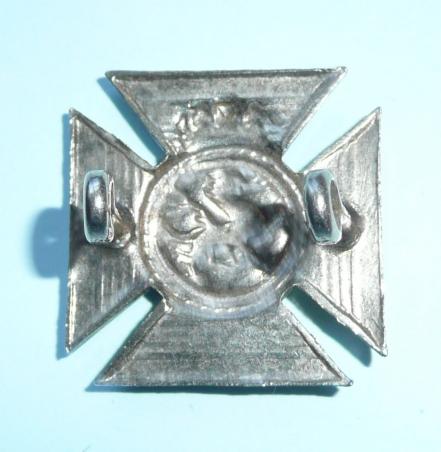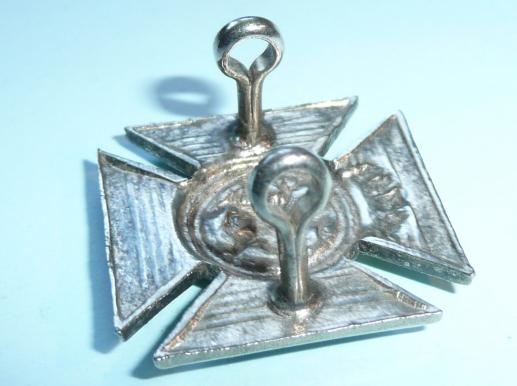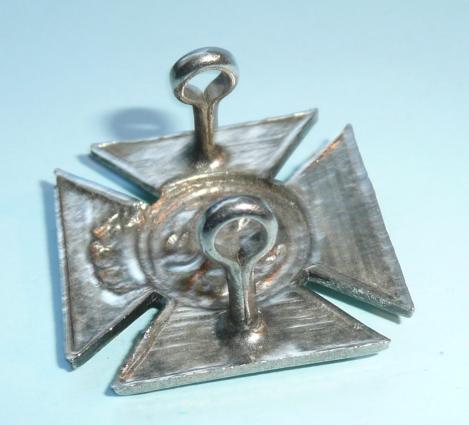The Duke of Edinburghs Royal Regiment (Berkshire & Wiltshire) Officers Silver Plated and Gilt Cap Badge
An officers silver plated and gilt die struck cap badge, with two original long loops to the reverse. A small badge at circa 26mm tall. Some loss of detail to the dragon from polishing otherwise in very good condition.
The regiment was formed on 9 June 1959 after defence cuts implemented in the late 1950s saw the amalgamation of the Royal Berkshire Regiment (Princess Charlotte of Wales's) and Wiltshire Regiment (Duke of Edinburgh's), forming the Duke of Edinburgh's Royal Regiment (Berkshire and Wiltshire).
The new badge was a silver cross patee (from the badge of the former Wiltshire Regiment), at the centre of which was a silver Chinese-style dragon (from the badge of the former Royal Berkshire Regiment). The Chinese dragon was surrounded by a gilt/gold double coil of naval rope (commemorating the service of the former regiments' service as marines, especially that of the 49th Regiment of Foot at the Battle of Copenhagen in 1801). This rope coil was surmounted by the ducal coronet of the regiment's Colonel-in-Chief in gilt.
On 23 July 1991, it was announced that (together with a number of other regiments) the Duke of Edinburgh's Royal Regiment would be required to amalgamate with another infantry regiment, in accordance with government decisions taken to expedite the Options for Change reductions in the army consequent upon the end of the Cold War. In 1 DERR's case it was required in due course to amalgamate with the 1st Battalion the Gloucestershire Regiment (1 GLOSTERS), at which time both of these regiments would cease to exist as individual regiments or battalions.
F55.9
Code: 61587

